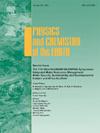是时候把喜马拉雅的“定时炸弹”拆了
IF 3
3区 地球科学
Q2 GEOSCIENCES, MULTIDISCIPLINARY
引用次数: 0
摘要
在过去的十年中,大量的研究文章大大提高了我们对喜马拉雅冰川湖的成因、演化和潜在危害的理解。然而,考虑到快速变化的区域气候和土地利用实践加剧了风险,迫切需要在研究和政策上转向冰川湖的适应性管理,从受监管的虹吸到多方利益相关者的参与。在这篇透视文章中,我们提出了一个优势、劣势、机会和威胁(SWOT)框架,以突出未来冰湖溃决洪水(GLOF)研究和政策制定的重点领域。所建议的方法在影响研究人员和决策者方面具有主动性,旨在整合当地的社会经济和文化背景,同时也评估社区对危险的看法。这也意味着,虽然本文的重点是喜马拉雅地区,但这里提出的想法和SWOT框架可以很容易地适用于全球任何其他地理区域。本文章由计算机程序翻译,如有差异,请以英文原文为准。
Time to diffuse the “ticking time bombs” of the Himalaya
During the past decade, a plethora of research articles have considerably advanced our understanding of the genesis, evolution, and hazard potential of the Himalayan glacial lakes. However, given the rapidly changing regional climate and land-use practices that exacerbate the risks, a research and policy shift towards adaptive management of glacial lakes, ranging from regulated siphoning to multistakeholder participation, is urgently required. In this perspective piece, we propose a Strengths, Weaknesses, Opportunities, and Threats (SWOT) framework, to highlight the key focus areas for future glacial lake outburst flood (GLOF) research and policymaking. The suggested approach is of proactive nature in influencing researchers and policymakers, and aims at integrating local socioeconomic and cultural contexts, while also assessing the hazard perception of communities. This also means that while the focus of this article is the Himalayan region, the ideas and the SWOT framework proposed here can easily be adapted for any other geographical region globally.
求助全文
通过发布文献求助,成功后即可免费获取论文全文。
去求助
来源期刊

Physics and Chemistry of the Earth
地学-地球科学综合
CiteScore
5.40
自引率
2.70%
发文量
176
审稿时长
31.6 weeks
期刊介绍:
Physics and Chemistry of the Earth is an international interdisciplinary journal for the rapid publication of collections of refereed communications in separate thematic issues, either stemming from scientific meetings, or, especially compiled for the occasion. There is no restriction on the length of articles published in the journal. Physics and Chemistry of the Earth incorporates the separate Parts A, B and C which existed until the end of 2001.
Please note: the Editors are unable to consider submissions that are not invited or linked to a thematic issue. Please do not submit unsolicited papers.
The journal covers the following subject areas:
-Solid Earth and Geodesy:
(geology, geochemistry, tectonophysics, seismology, volcanology, palaeomagnetism and rock magnetism, electromagnetism and potential fields, marine and environmental geosciences as well as geodesy).
-Hydrology, Oceans and Atmosphere:
(hydrology and water resources research, engineering and management, oceanography and oceanic chemistry, shelf, sea, lake and river sciences, meteorology and atmospheric sciences incl. chemistry as well as climatology and glaciology).
-Solar-Terrestrial and Planetary Science:
(solar, heliospheric and solar-planetary sciences, geology, geophysics and atmospheric sciences of planets, satellites and small bodies as well as cosmochemistry and exobiology).
 求助内容:
求助内容: 应助结果提醒方式:
应助结果提醒方式:


